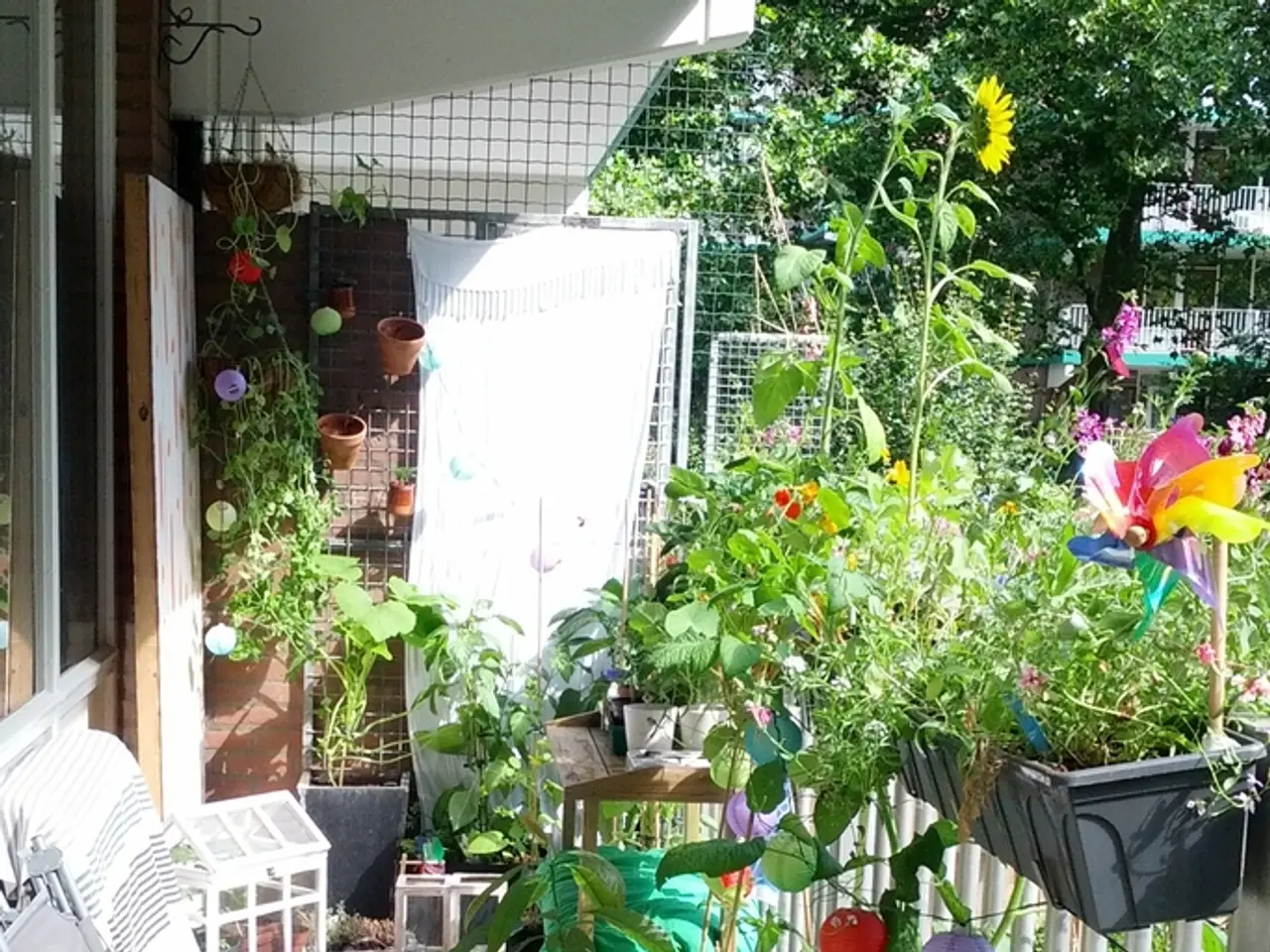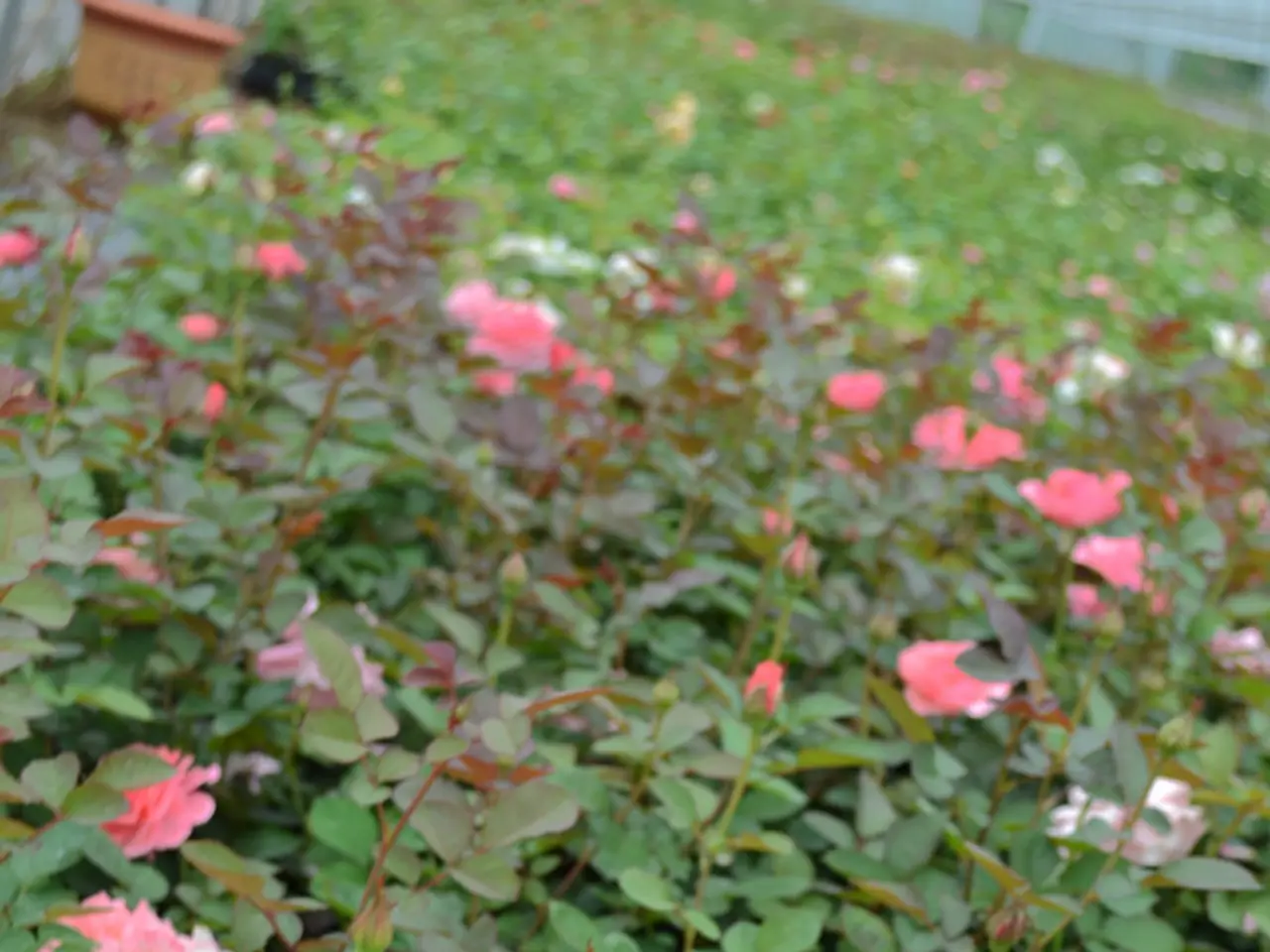Mastering Landscape Fabric Integration with Drip Irrigation: Comprehensive Step-by-Step Guide
Creating a hassle-free, water-saving garden doesn't mean skimping on health or looks. Pair up landscape fabric with a drip irrigation system for superior weed control, moisture conservation, and top-notch plant hydration. Here's a comprehensive guide to help you combine these powerhouses of landscaping. Let's dive into the deets!
Why the dynamic duo?
- Weed Warfare: Landscape fabric serves as a physical barrier restricting sunlight from reaching weed seeds.
- Water Wisdom: Drip irrigation delivers water straight to plant roots, minimizing evaporation and unnecessary water runoff.
- Low Effort, High Rewards: Less weeding and efficient watering equals time and energy savings for you.
- Healthy Blooms: Consistent, accurate watering fosters healthier plants and fights off diseases linked to wet foliage.
Together, they form a dance of efficiency, ideal for garden beds, shrub borders, hedgerows, and veggie patch plots.
Materials You'll Befriend
- Woven or non-woven landscape fabric
- Drip irrigation system (tubing, emitters, connectors, timer, etc.)
- Landscape staples or fabric pins
- Mulch (optional though highly suggested)
- Utility knife or scissors
- Measuring tape
- Garden trowel or shovel
- Plants or existing garden layout
Grab Your Tools and Get Ready to Build
1. Visualize Your Garden
Start by charting your garden bed layout, marking the positions of plants and estimating drip lines placement.
- Plan a new garden bed or retrofit an existing one.
- Mark plant locations, drip lines, and any control boxes or timers.
2. Lay Out the Drip Irrigation System
First, set up the irrigation system on bare soil.
- Run the main supply line from your water source or hose bib.
- Set up lateral lines or drip tubing next to the plant bases.
- Install emitters or drip lines based on the plants' needs.
- Go for 0.5-1 GPH emitters for smaller plants.
- Use 2-4 GPH for shrubs or trees.
- Test the system: Run water through it, checking for leaks or clogs.
Tip: Keep tubing in place with irrigation stakes while installing the landscape fabric.
3. Spread Out the Landscape Fabric
Once the irrigation system is functioning and properly positioned, roll out the landscape fabric directly over the tubing.
- Start from one end and work your way across the bed.
- Overlap fabric edges by 6-12 inches for optimal weed prevention.
- Secure the fabric to the ground with landscape staples every 12-18 inches.
4. Cut Opening for Plants and Emitters
Using a utility knife or scissors:
- Cut 'X' or circular holes where each plant will be placed.
- Tuck back the fabric flaps once the plant's home is readied or you've planted it.
- For already grown plants, cut carefully around the plant base to avoid root damage.
To access the emitters:
- Craft small slits or holes near the surface, allowing emitters to rest just below the fabric.
- For in-line drip tubing, leave it under the fabric—water will seep through.
Important: Landscape fabric is penetrable for water, so emitters generally don't need exposure unless you're using rigid plastic sheeting (not recommendable in this setup).
5. Add Mulch (Highly Recommended!)
Mulch provides another protective layer and a touch of elegance:
- Sprinkle 2-3 inches of mulch (bark, straw, wood chips) over the fabric.
- Mulch aids in fabric anchoring, improves water retention, and shields drip lines from UV damage.
Maintenance Tips
Regular Check-ups: Check for clogged emitters or drips every month.* Weed Watch: Between occasional weeds growing through cuts—pull 'em fast!* Plant Growth Adjustments: Gradually expand emitters as plants roots spread.* Fabric Replacement: Landscape fabric generally lasts 5-10 years, depending on quality.
Mistakes to Avoid
- Emitter Burial: Hiding emitters too deep can block water flow or obstruct them.
- Impermeable Fabric or Plastic Sheeting: Water can't pass through—roots may struggle.
- Misaligned Tubing and Emitters: Poor alignment wastes water and frustrates thirsty roots.
- Skipped Mulch: May lead to fabric degradation and weed growth spikes.
Final Thoughts
Pairing landscape fabric with drip irrigation is your secret weapon for a low-maintenance, water-sipper garden sure to delight. Install it right, and you'll enjoy years of reduced garden maintenance, escalated water efficiency, and flourishing, healthy plants. Live on, garden warrior!
- Implementing both landscape fabric and drip irrigation system is crucial for home-and-garden enthusiasts who want an efficient, water-saving garden without compromising on lifestyle or appeal.
- This dynamic duo offers weed control, water conservation, plant hydration, and time savings by reducing weeding and minimizing water waste, all while ensuring healthy, thriving plants in garden beds, shrub borders, hedgerows, and vegetable plots.






